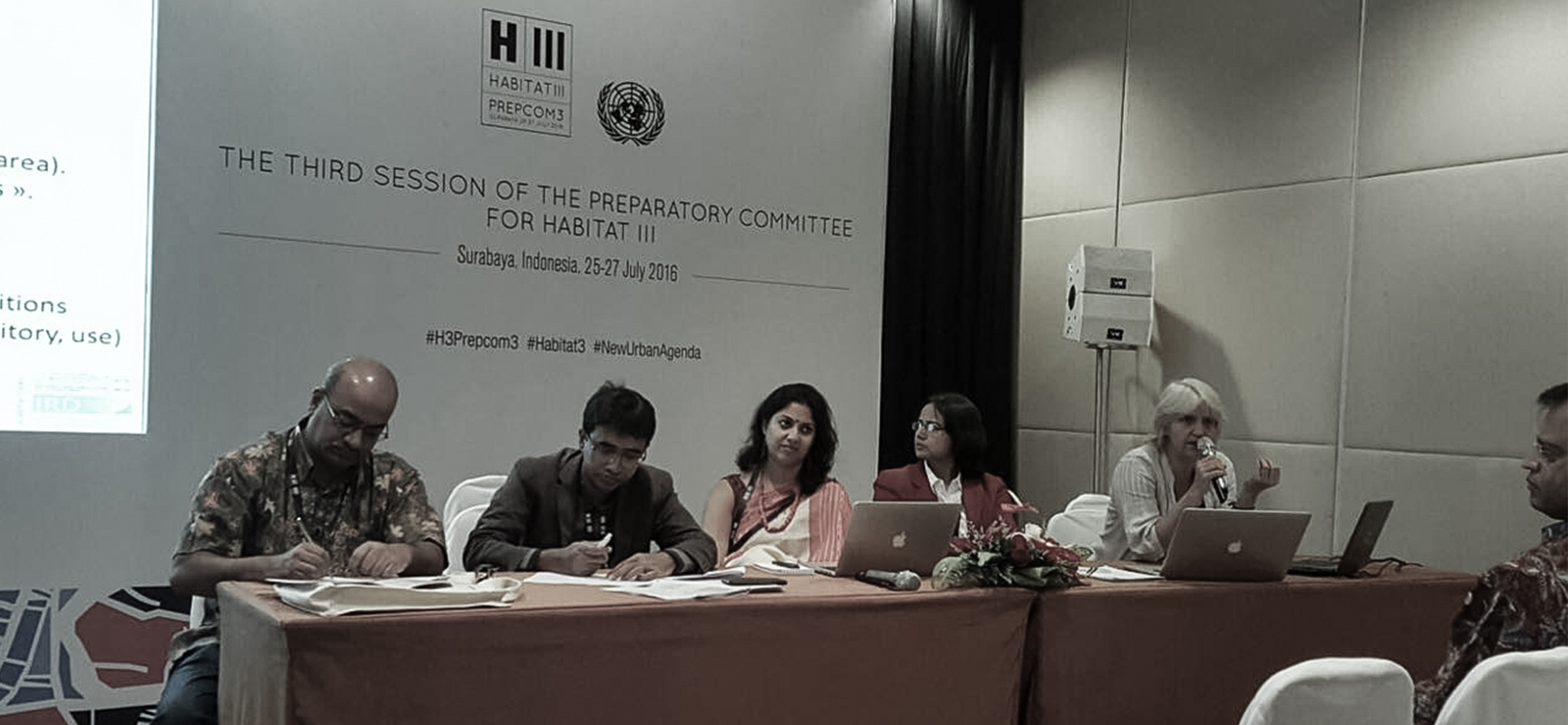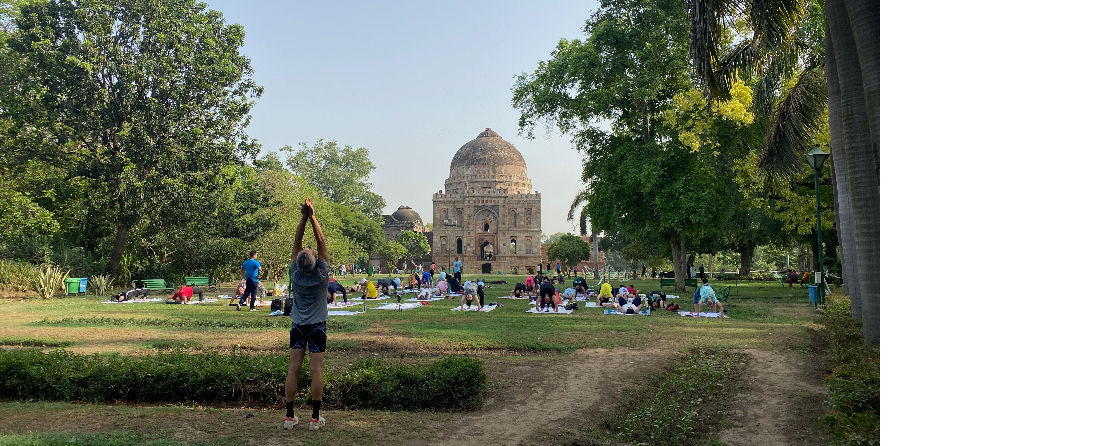By Prepcom3, the last of three preparatory meetings to debate the intent and content of UN Habitat’s ‘New Urban Agenda’, member States were expected to agree on a way forward to improve the quality of human life by focusing on cities. Negotiations in Surabaya were to conclude with an outcome document to be signed at the Habitat III conference planned at Quito, Ecuador, in October, 2016.
While the negotiations were unsuccessful in reaching a resolution, thus necessitating informal talks between now and October, discussions at Surabaya reflect global trends and ideas to find solutions to the problems of the urban millennium.
The reflections below share key takeaways from Prepcom3 in general, and from the Centre for Policy Research–Institut de recherche pour le développement (CPR-IRD) event on 26 July 2016, specifically.
Prepcom3: from ‘settlements’ to cities– deliberating estimates and definition
The shift in focus from improving human settlements (Istanbul Declaration of 1996) to viewing urbanisation as one of ‘the 21st century’s most transformative trends’ appears to be premised on a belief that the world’s urban population will ‘nearly double’ by 2050. The base figure for this is, however, not clarified in the latest draft of the New Urban Agenda, released in July this year.
The earlier zero draft, which was released in May 2016, however, stated that by 2050, the proportion of people in the world living in urban areas ‘will reach nearly 70%’. This whittling down of the extent of urbanisation is a reflection of the concern expressed by member States and stakeholders over the legitimacy of urbanisation estimates.
Indeed, there are pressing concerns on how ‘urban’ is understood given the varying definitions used across the world, and it is unclear whether an emphasis on urban is the best approach to providing sustainable and adequate housing to underserved populations across the world who live in settlements with varying spatial and socio-economic characteristics.
CPR-IRD event on small cities and informal settlements: expanding the notion of the urban
While the thrust of the side and parallel events at Prepcom3 was on discussing solutions and strategies for equitable, sustainable and resilient urban development, the side event organised by the Centre for Policy Research (CPR) in partnership with Institut de recherche pour le développement (IRD) on 26 July sought to expand the current notions of what is urban beyond the metropolis to embrace informal settlements and small cities.
Arguing that informal settlements and small cities have similarities in terms of scale, precariousness and lack of basic infrastructure, the event sought to see the urban in fresh ways, moving beyond spaces defined in terms of the legality of tenure, inclusion in plan and stringent governance frameworks.
Using examples of problems related to the provision of basic services like water and sanitation, panellists—Valerie Clerc of IRD, Mukta Naik of CPR, Gopa Samanta of University of Burdwan, Khairul Islam of WaterAid Bangaldesh and Shanawez Hossain on BRAC University—sought to highlight technological advancements in non-sewer sanitation, the successful use of community-based processes to access potable water, and innovative governance models like slab-based water pricing as potential solutions, that could address context-specific urban problems.
The interactive session, attended by over 70 delegates, raised questions on the dovetailing of traditional planning tools with community-based systems of knowledge and implementation. A storified version of the live tweets from the panel and plenary session of the conference can be accessed here.
The return of ‘planning’: the dominant message
That many discussions at Prepcom3, including the CPR-IRD side event, debated the modalities of planning and its role in meeting Sustainable Development Goals (SDGs) was no coincidence. In a marked change of stance since the Istanbul Declaration, which had nearly no mention of planning, the centrality of planning as a tool to achieve sustainable urban development is evident in the current draft of the New Urban Agenda.
When Shipra Narang Suri, President ISOCARP, the global association of professional planners dramatically exclaimed, ‘planning is back!’ at a UN Habitat side event at Prepcom3, her tone reflected the struggles and the possibilities of this shift.
The good news is that notions of planning have expanded to address multiple scales–supranational, national, metropolitan, city, and neighbourhood. In fact, the UN Habitat has brought out International Guidelines on Urban and Territorial Planning (IG-UTP), and is developing a comprehensive compendium of illustrative practices to guide national, regional and local governments.
The guidelines, currently available in 12 languages, contain case studies from across the world that demonstrate the successful use of a variety of planning processes that integrate elements of physical and strategic planning in achieving more compact, socially inclusive, better integrated and connected cities that are resilient to climate change.
For Indian cities, this necessitates a relook at planning components and implementation strategies, especially at municipal governance frameworks and capacities. When the journey from Surabaya to Delhi ends in a three-hour traffic jam caused by water logging and poor traffic management, the importance of dovetailing policy and planning with management capacities and implementation is brought home in a rather emphatic manner.
See video of India’s official statement at PrepCom3 and read the Habitat III National Report.



